Cliff Lift, Southend-on-Sea
TODAY'S ITINERARY
Exploration: Monday, 24 June, 2019
lv London Fenchurch Street 0832 c2c
ar Southend Central 0925
lv Southend Central 1136 c2c
ar London Fenchurch Street 1235
A Venn diagram of the categories funicular railways and cliff railways would show a great deal of overlap. Of the thirteen funicular railways I have described in these pages I think eleven fall into both categories. The two I would exclude are the Shipley Glen Tramway and Great Orme Tramway. They are certainly funiculars but I don't think they go up cliffs. It's a judgement call.
At Southend-on-Sea we have the only surviving example of the opposite case: a cliff railway that is not a funicular.[note 1] What's worse, everyone involved seems to think it is a funicular. I am going to include it in this series, but with a carefully altered masthead, just to make sure you know that I know what it is. It's an inclined elevator. And also, it is honestly a cliff railway.
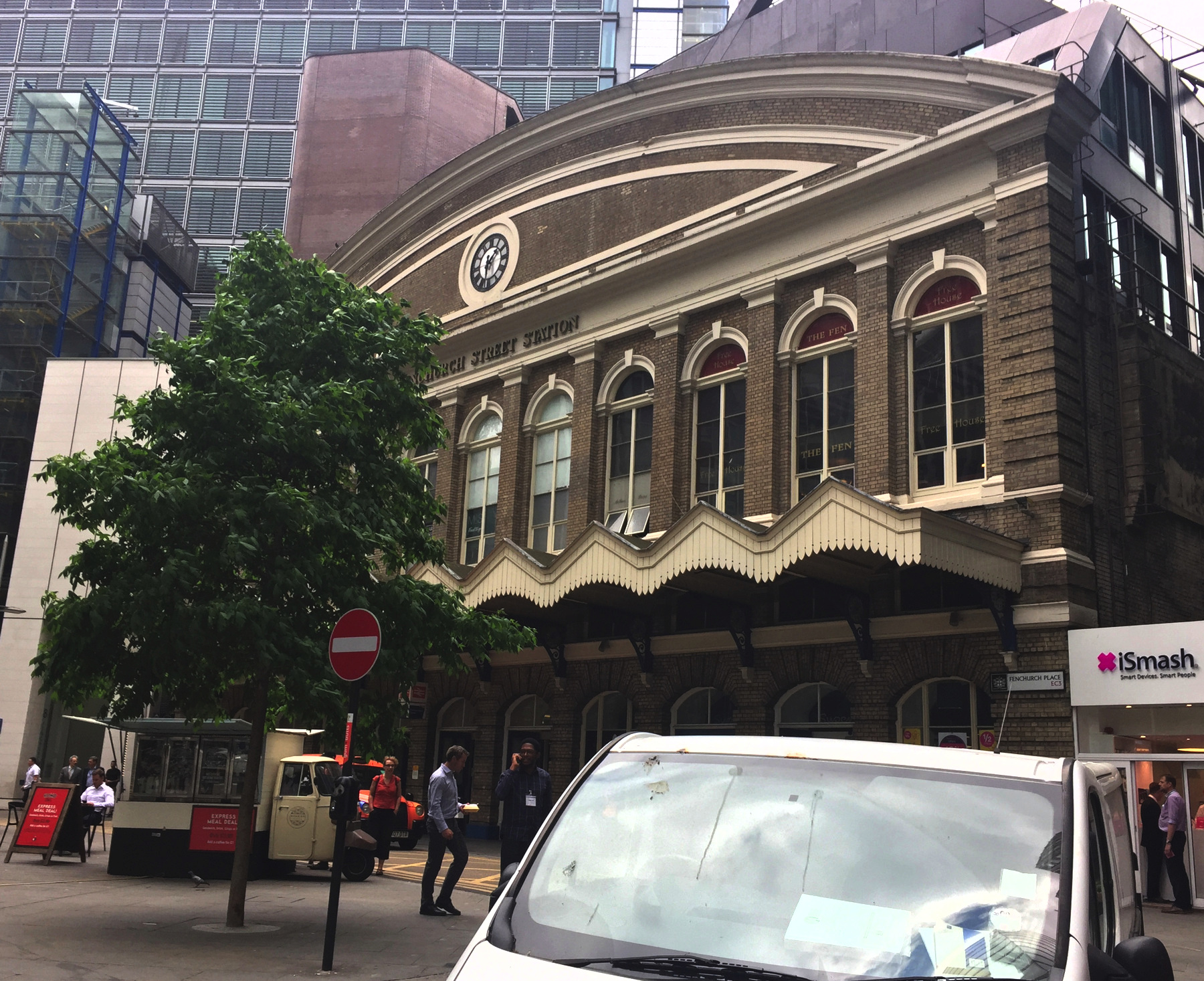
This was the first time I ever took a train at Fenchurch Street. If I was keeping a life list of All the London Termini I would now be done. I hold nothing against London's smallest terminus, poor thing, crowded into a site off the main streets and with not so much as one Underground station to its name. It's just that the trains from Fenchurch Street go humbly to the eastern suburbs and not the world heritage sites that get all the attention. But Southend is pretty good, at least for my kind of traveller, and it needs only a half day out. The train company is called c2c (City to Coast?).
Here's what the Thames looks like as it reaches the sea, seen from the train window. Those clouds really give it some atmosphere.
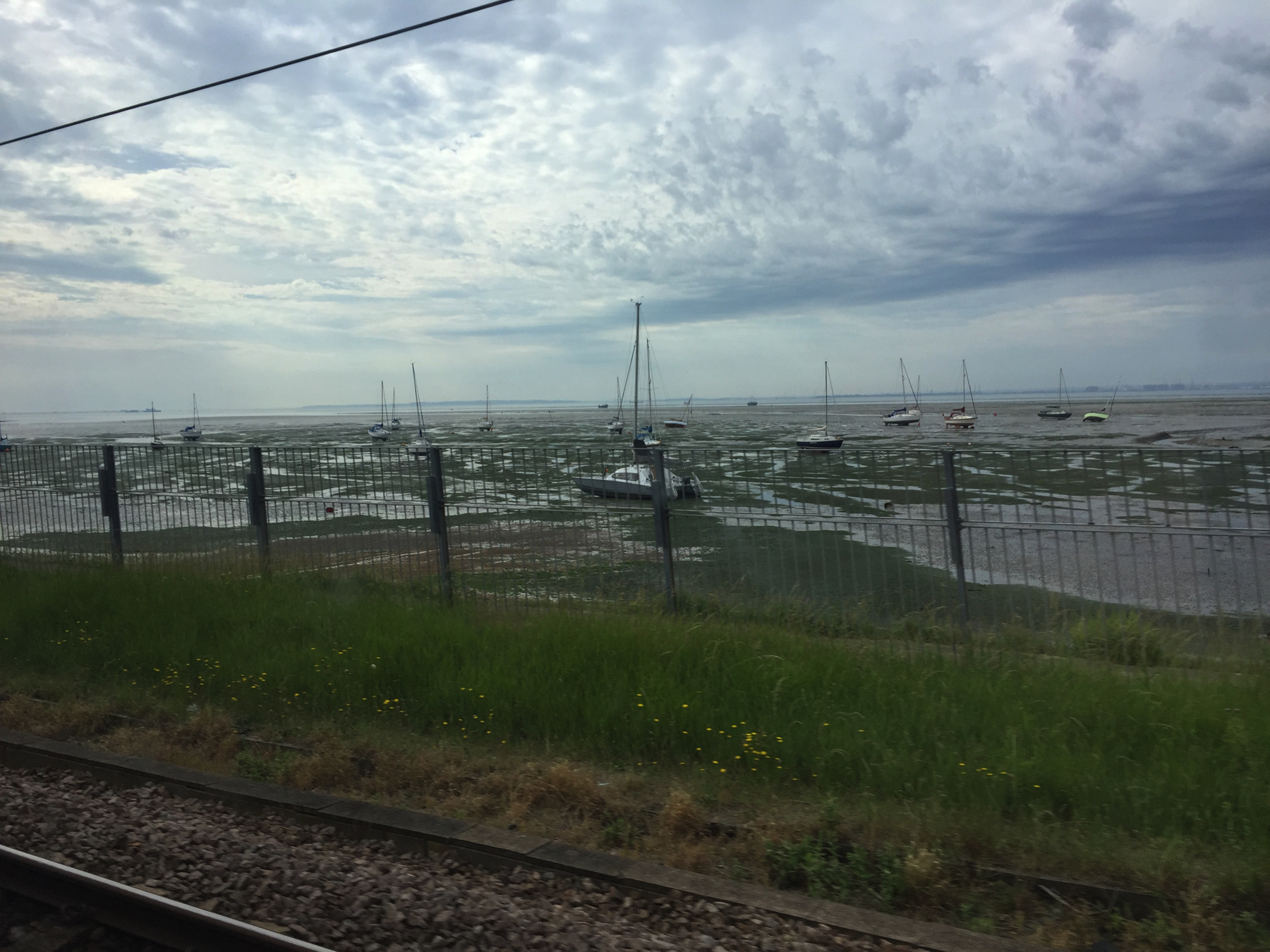
The cliff lift is run by volunteers for only a few hours each day. Since I wanted to see the Southend Pier Railway too, I arrived a little early for the cliff lift. The train from Fenchurch Street comes in at Southend Central station, a few blocks closer to the sea than Southend Victoria, which is reached from the Liverpool Street terminus. The High Street, mostly closed to motor traffic, is the obvious path down to the pier.
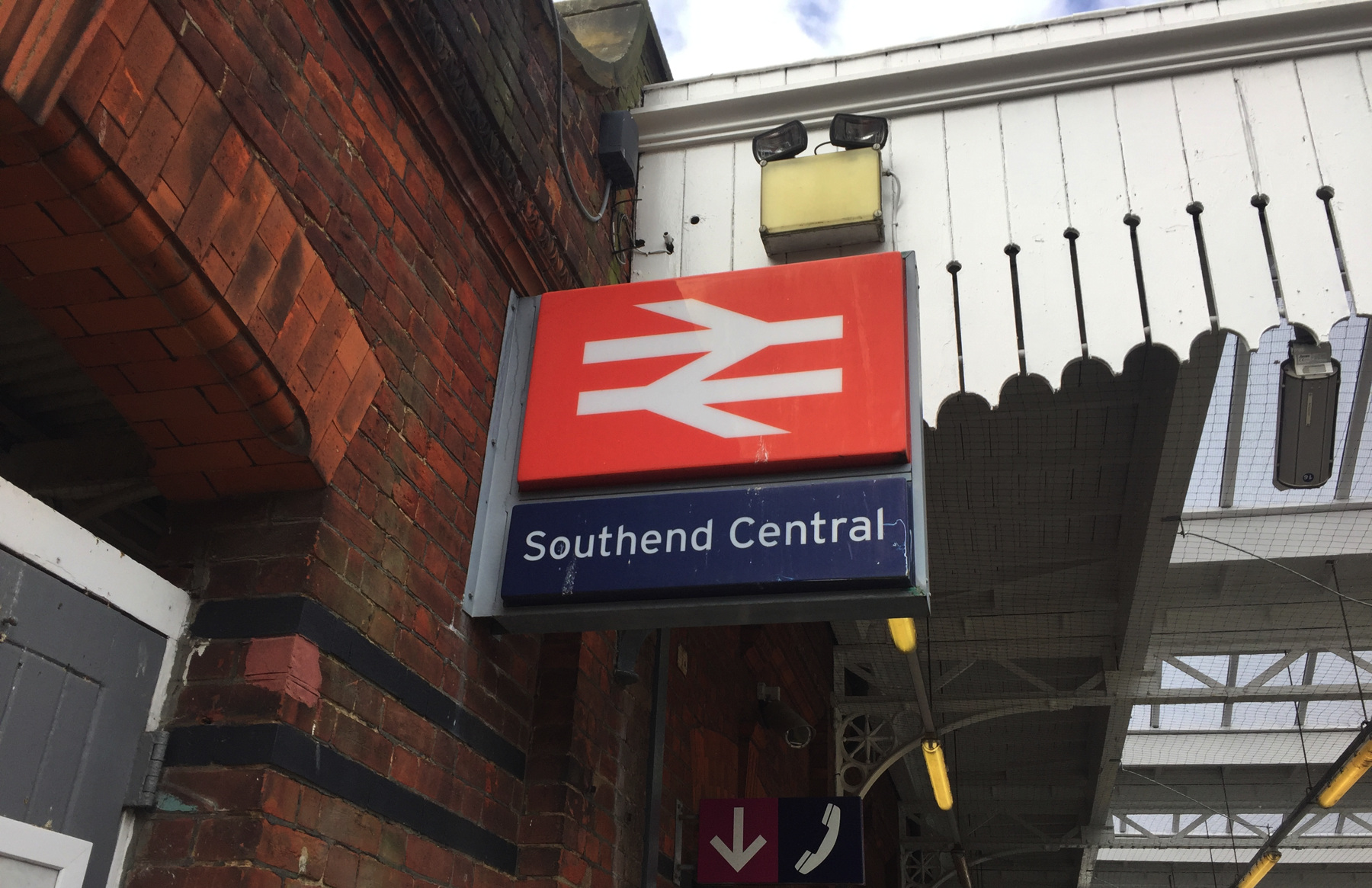
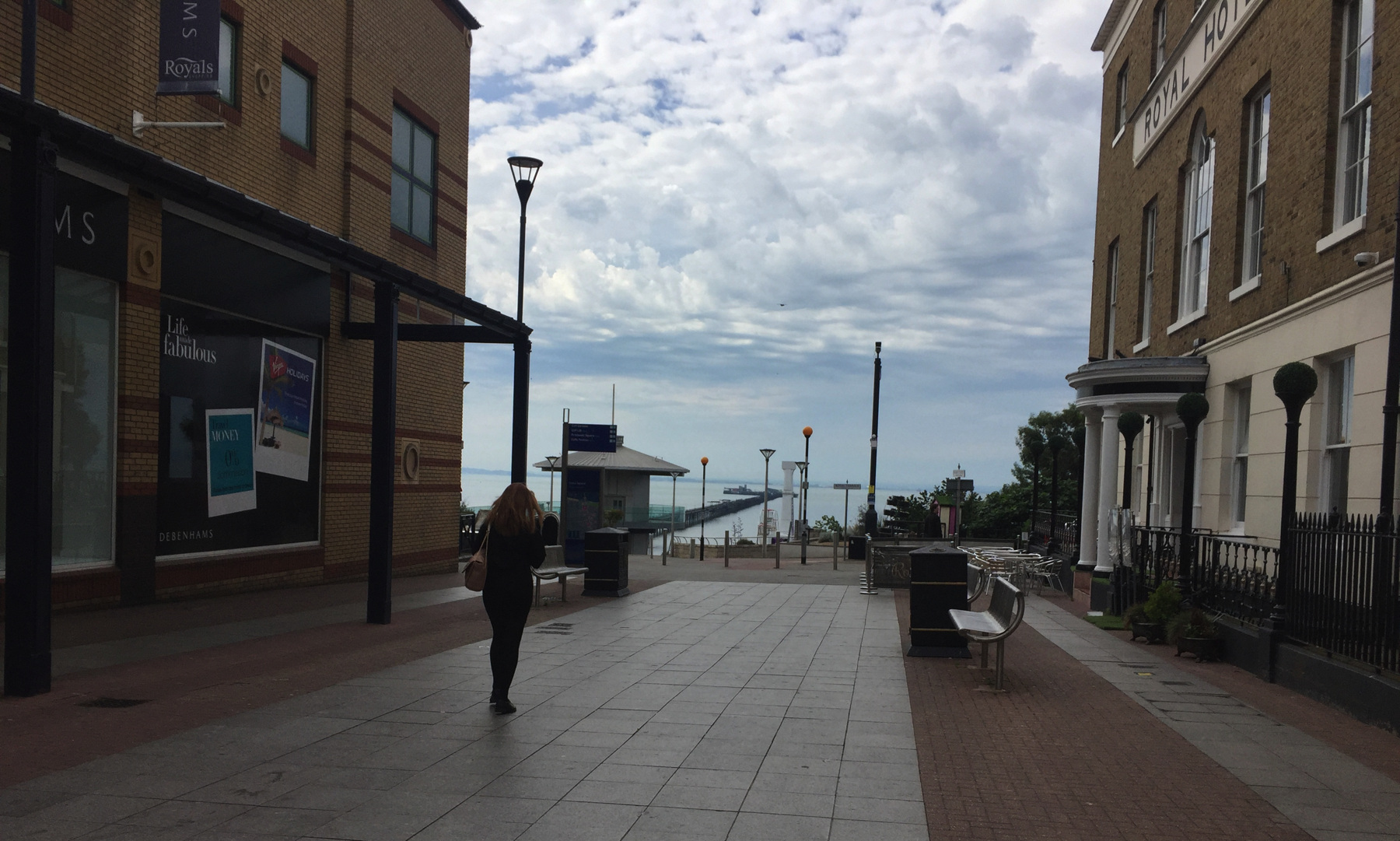
The Southend Pier is almost a mile and a half long. Its purpose was to reach deep water, so that ships could land passengers here, whence, even with a two-mile transfer to the railway, they could reach London sooner than by a ship following the winding course of the Thames. Those days are past, but on finer days than this one the pier still has its share of visitors who enjoy the amusements on the shore and the breezes at the outer end. The pier serves a functional purpose too: at the end it hosts a lifeboat station.
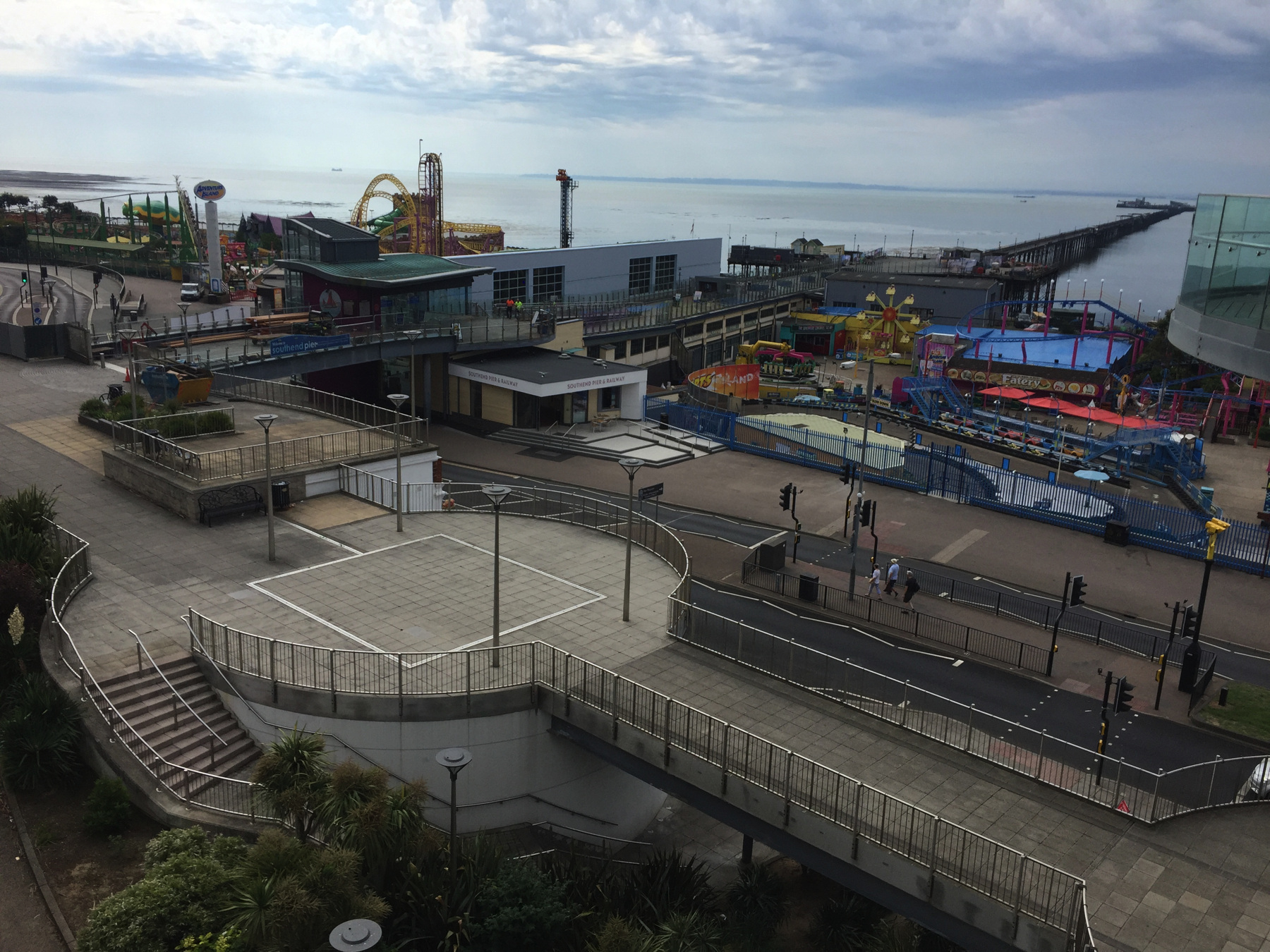
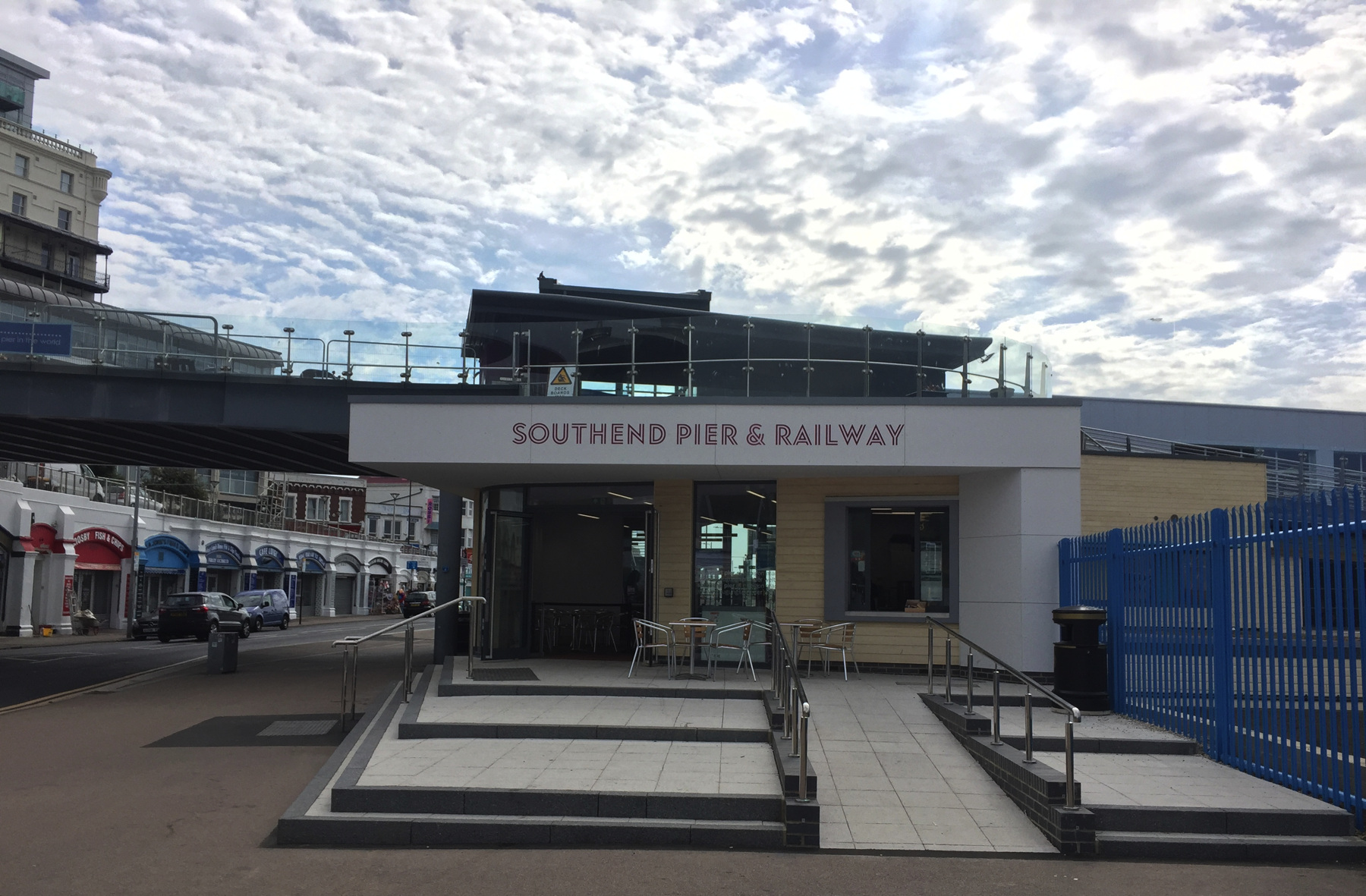
The Southend Pier Railway, being completely horizontal, is not a funicular, just to clear that up. Call it an added attraction while you're in town. The railway has two trains powered by diesel engines that run on three foot gauge track. Before being closed from 1978 to 1986 because of major repairs being made to the pier, the railway was run electrically with a center third rail and a wider three foot six inch gauge track. The poster for the museum (not open when I was there) shows one of the green and white electric trains, and not only that, it shows it on a curve the likes of which is no longer found anywhere on the railway.
The trains now in service are named for Sir John Betjeman and Sir William Heygate. The former is the well known writer who loved London and its surrounds, but it was the now lesser known Heygate who raised money to build the pier. Betjeman wrote, "The pier is Southend, Southend is the pier," words that appear in a cheerful drawing at the outer end.
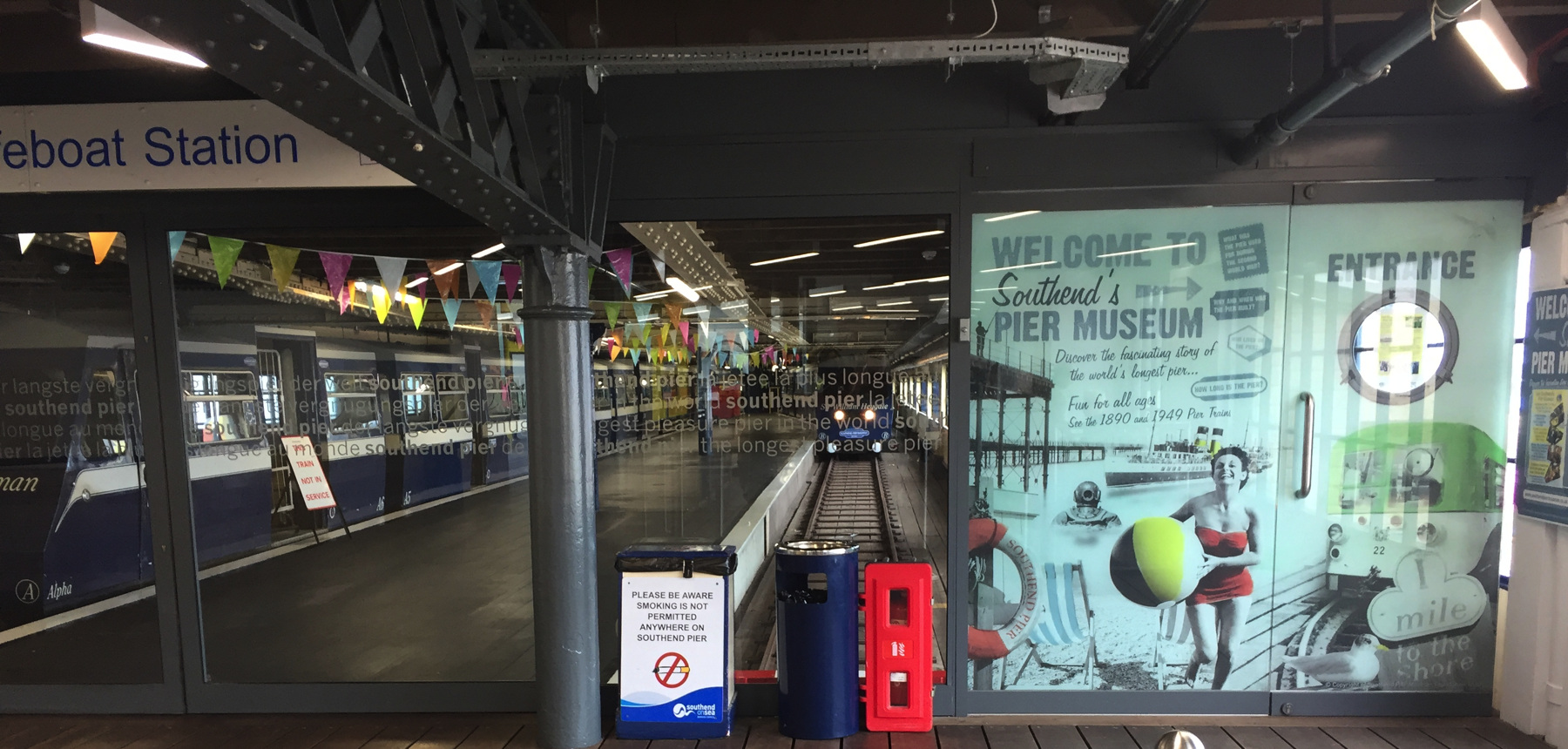
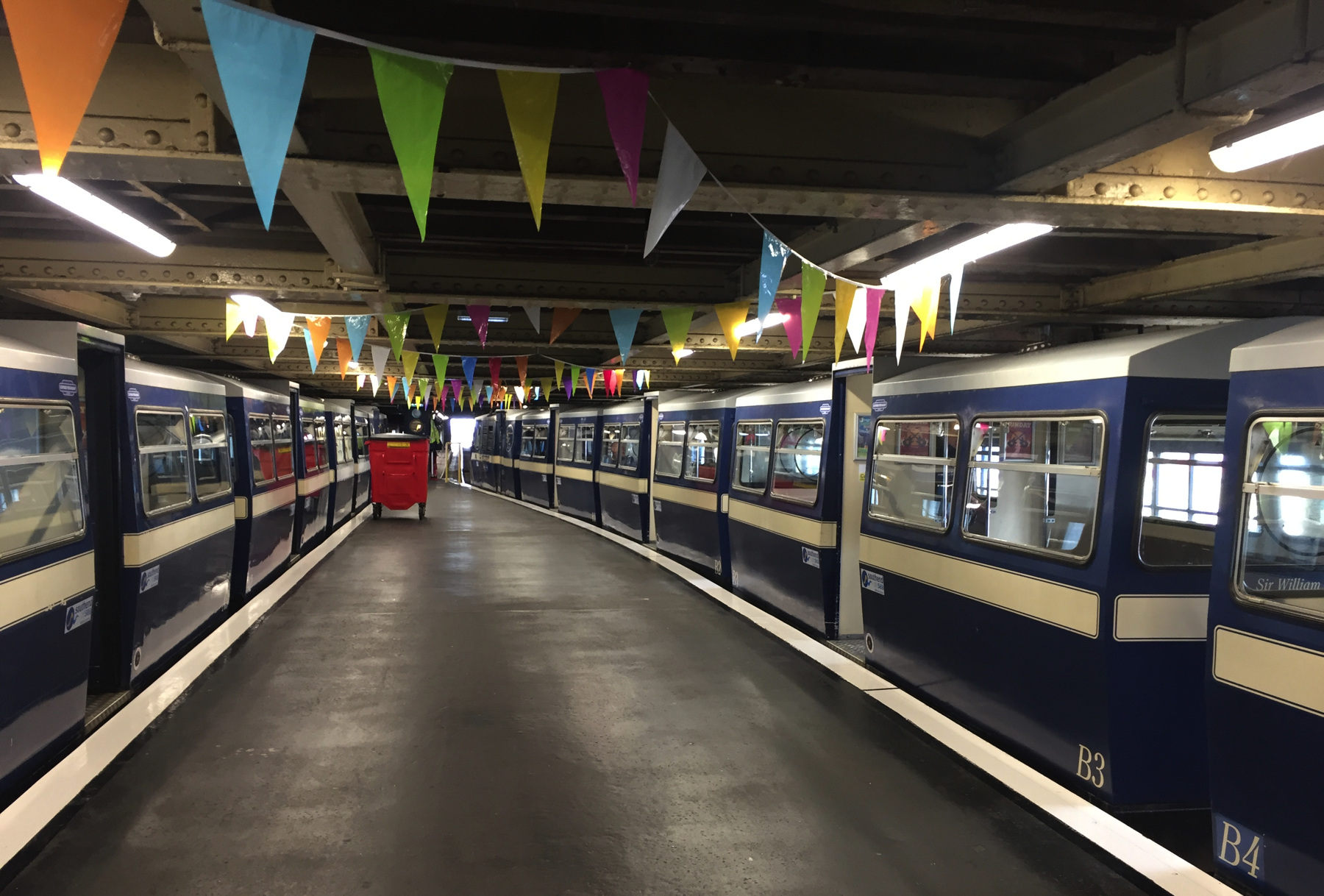
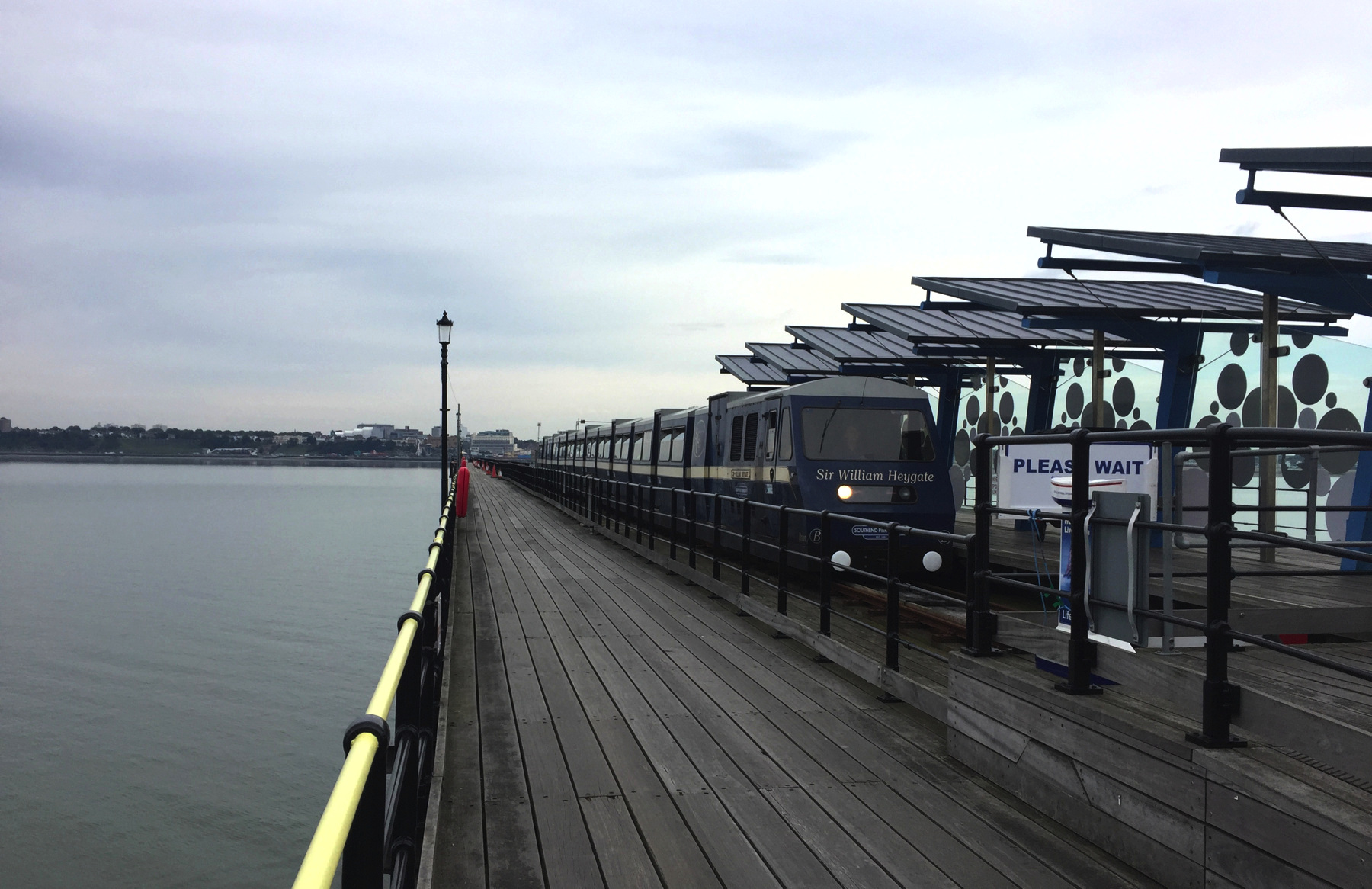
I hesitate to mention the Pier Hill Lifts. I admit I rode one of the cars to go down to the pier from the High Street. It's a lift, but they call the sloping ground a hill, not a cliff, so I think I can get out of covering it as a cliff lift.
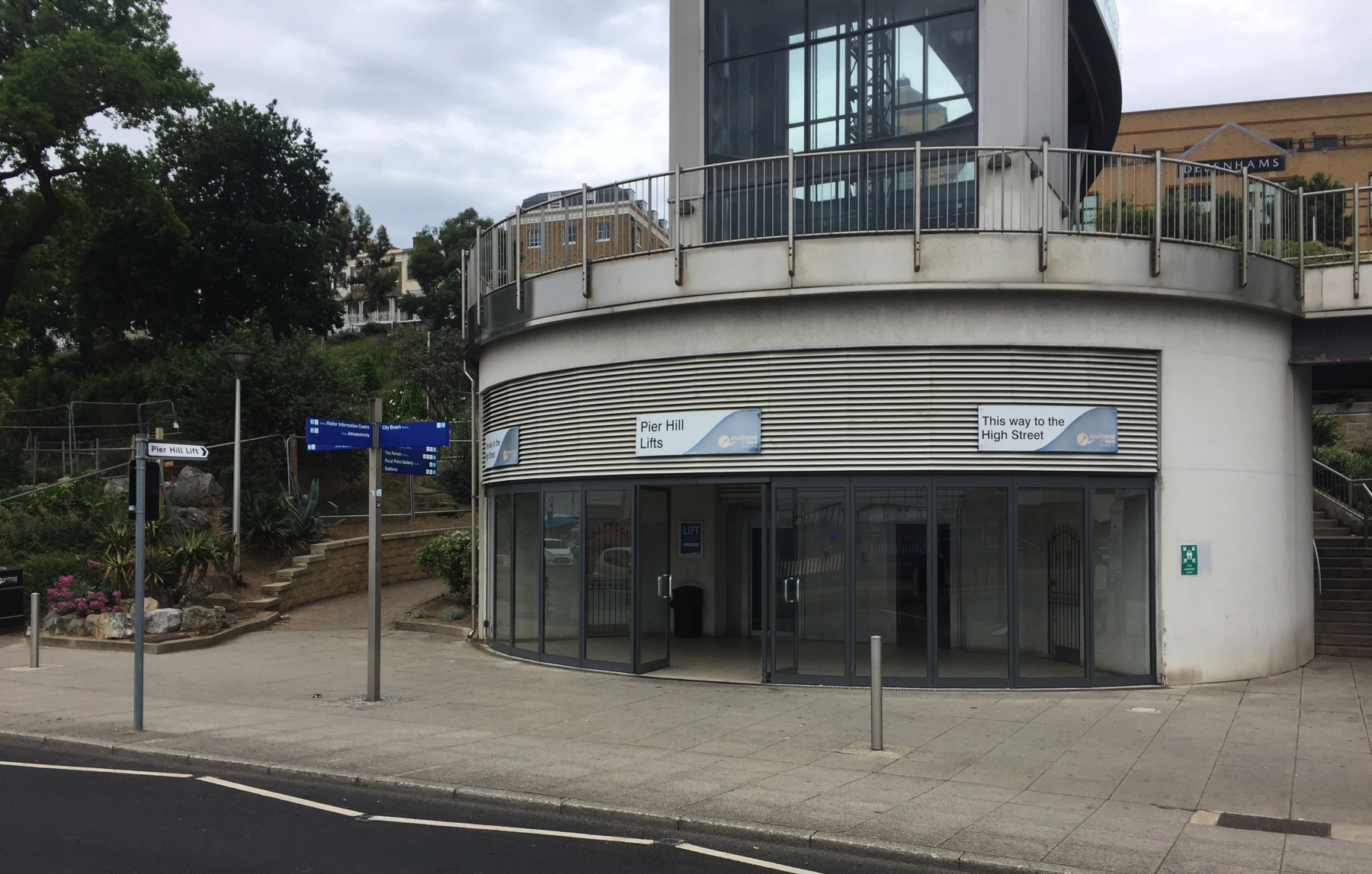
As you come off the pier, if you ignore the Pier Hill Lifts and walk just a short way south you find yourself at the Cliff Lift. When I got there I saw one car at the top and... no other car.
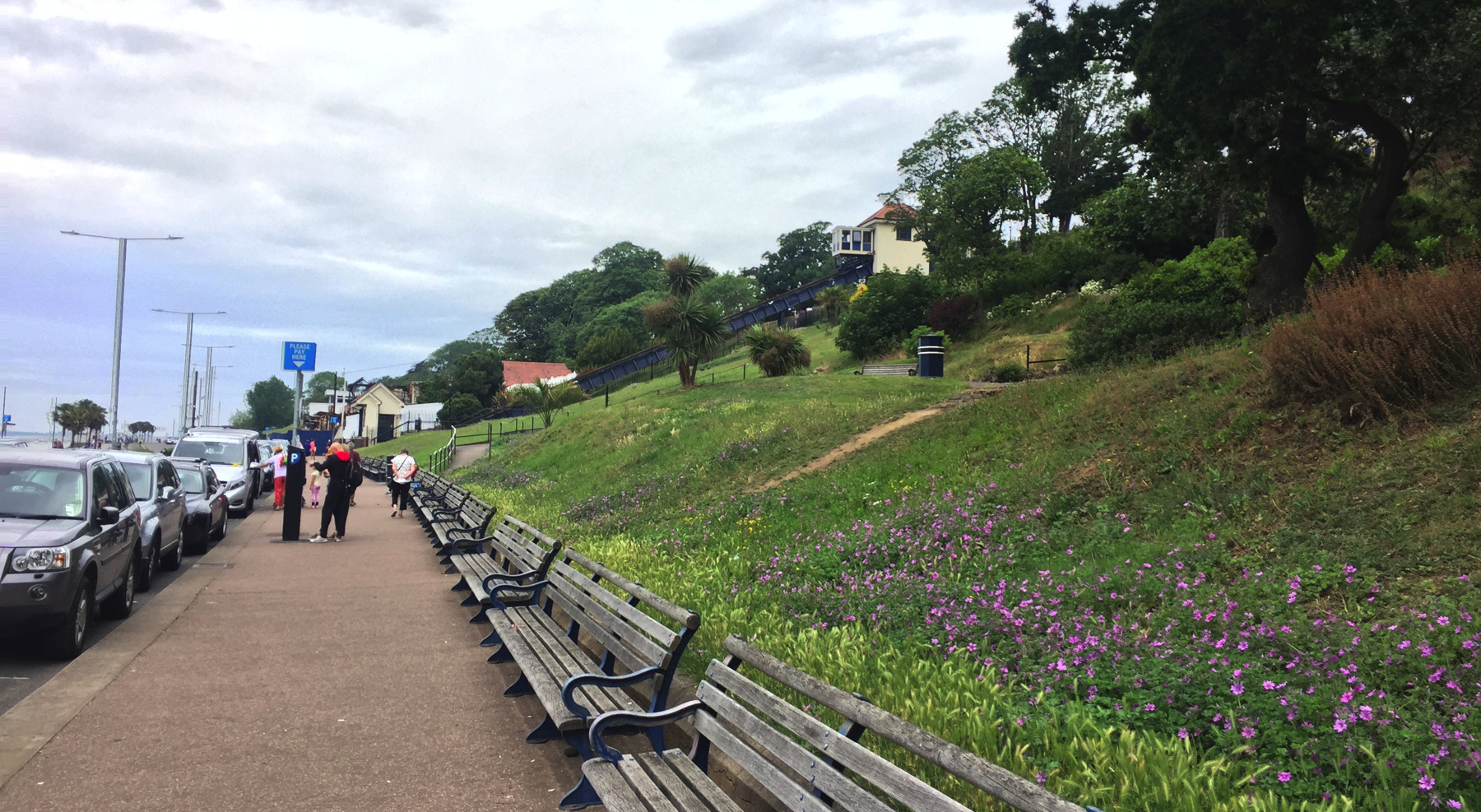
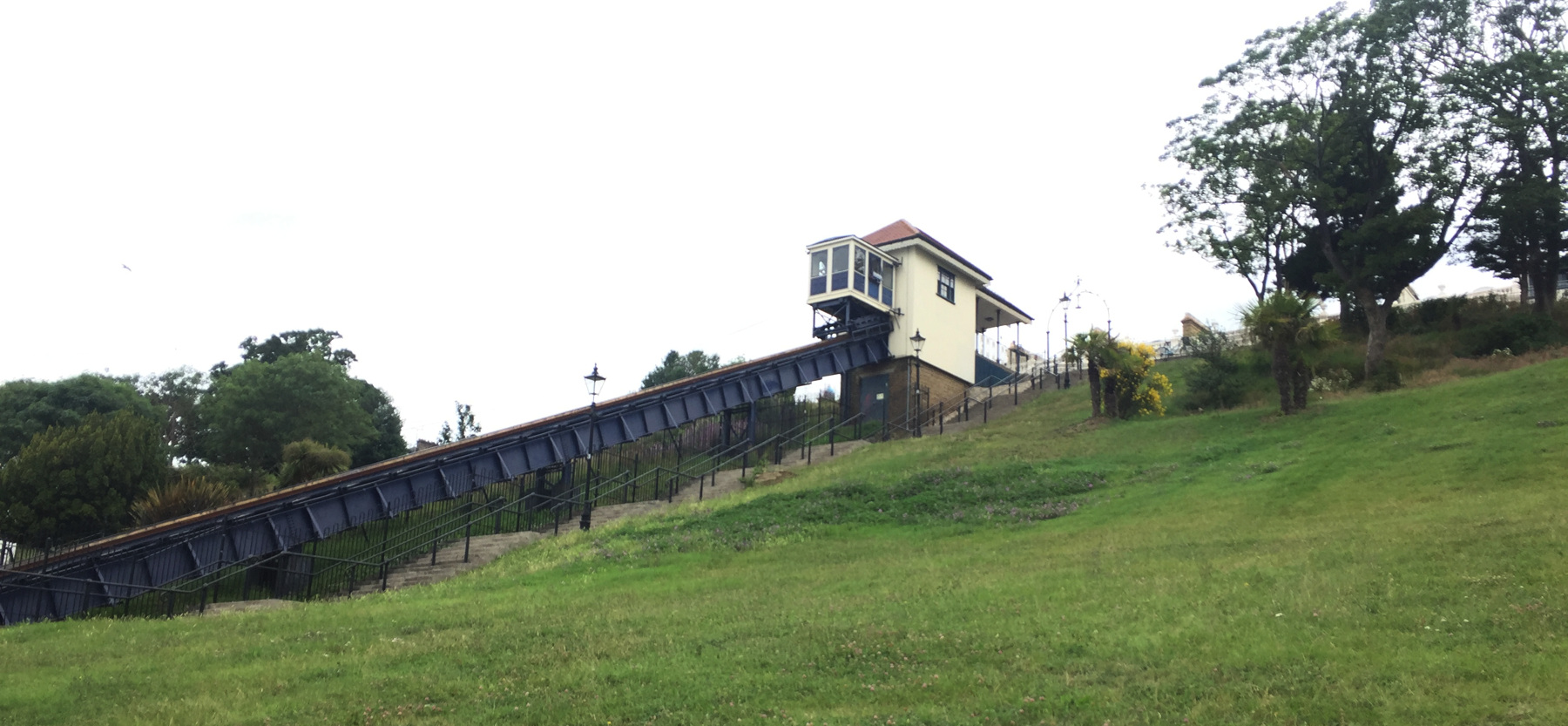
In the cozy lower station I found on the wall an illustrated history of the Cliff Lift including a description of a funicular railway as one in which "a cable moves a carriage up and down a steep slope".
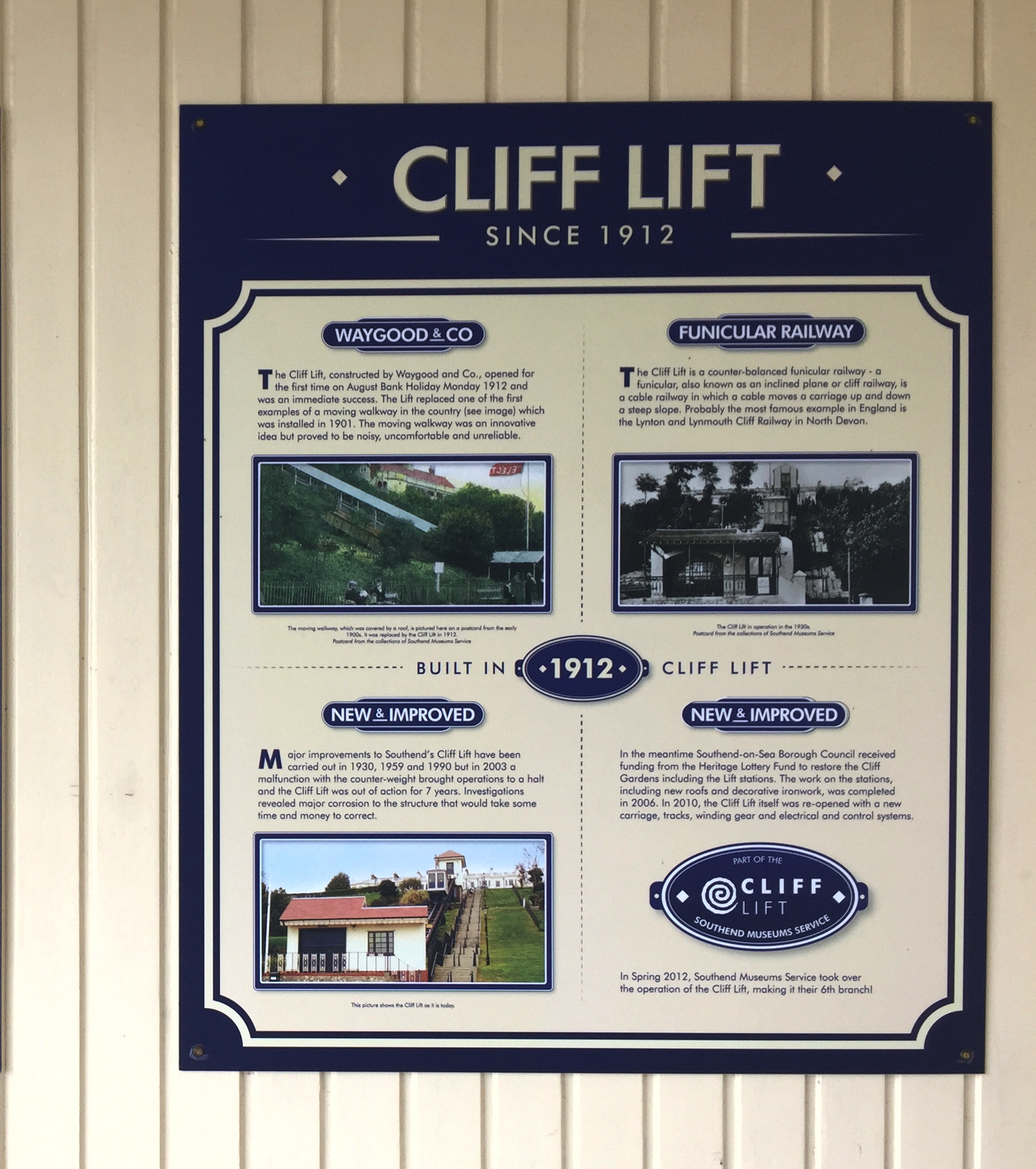
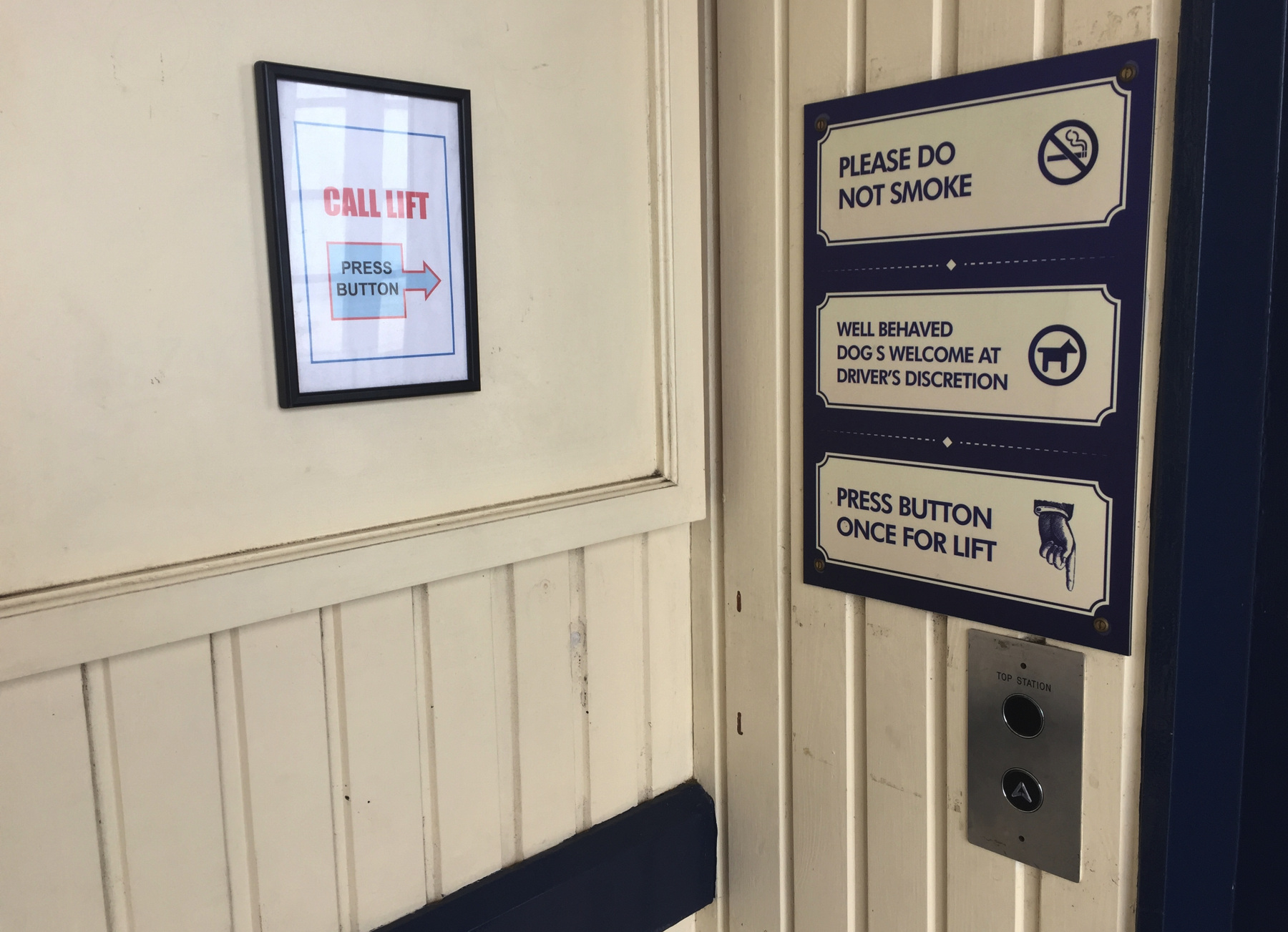
If the car is not at the lower station, you can press a very elevator-like button to request the operator at the upper station to bring it down. If you press it more than once it just annoys the operator, so be nice.
I want to thank the person who took away the apostrophe in "DOG S".
Here it comes. The front of the car has two panels with windows, and the one on the right is the door.
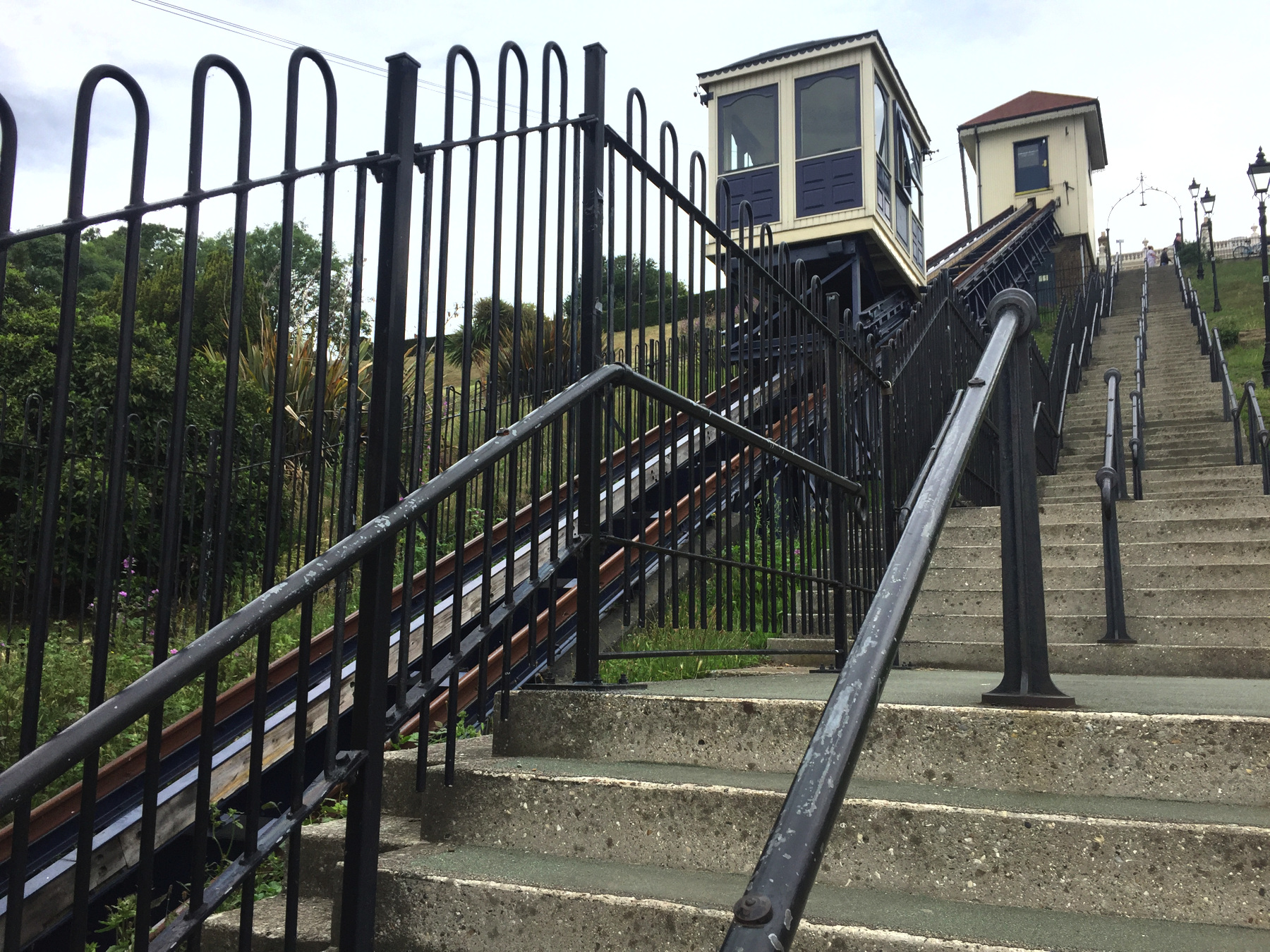
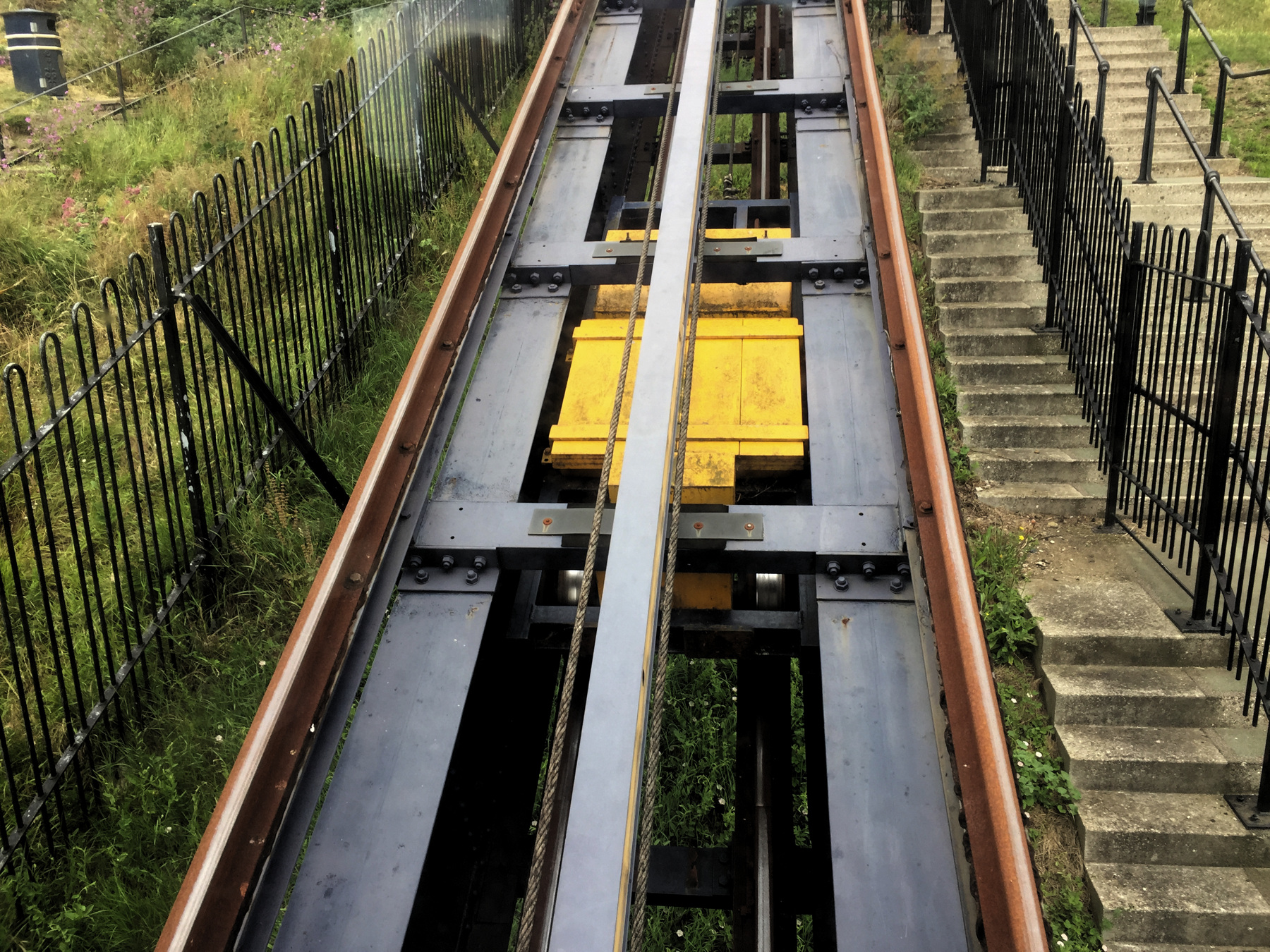
Half way up we pass the other car, its shiny wheels running on its own much narrower gauge track below us.
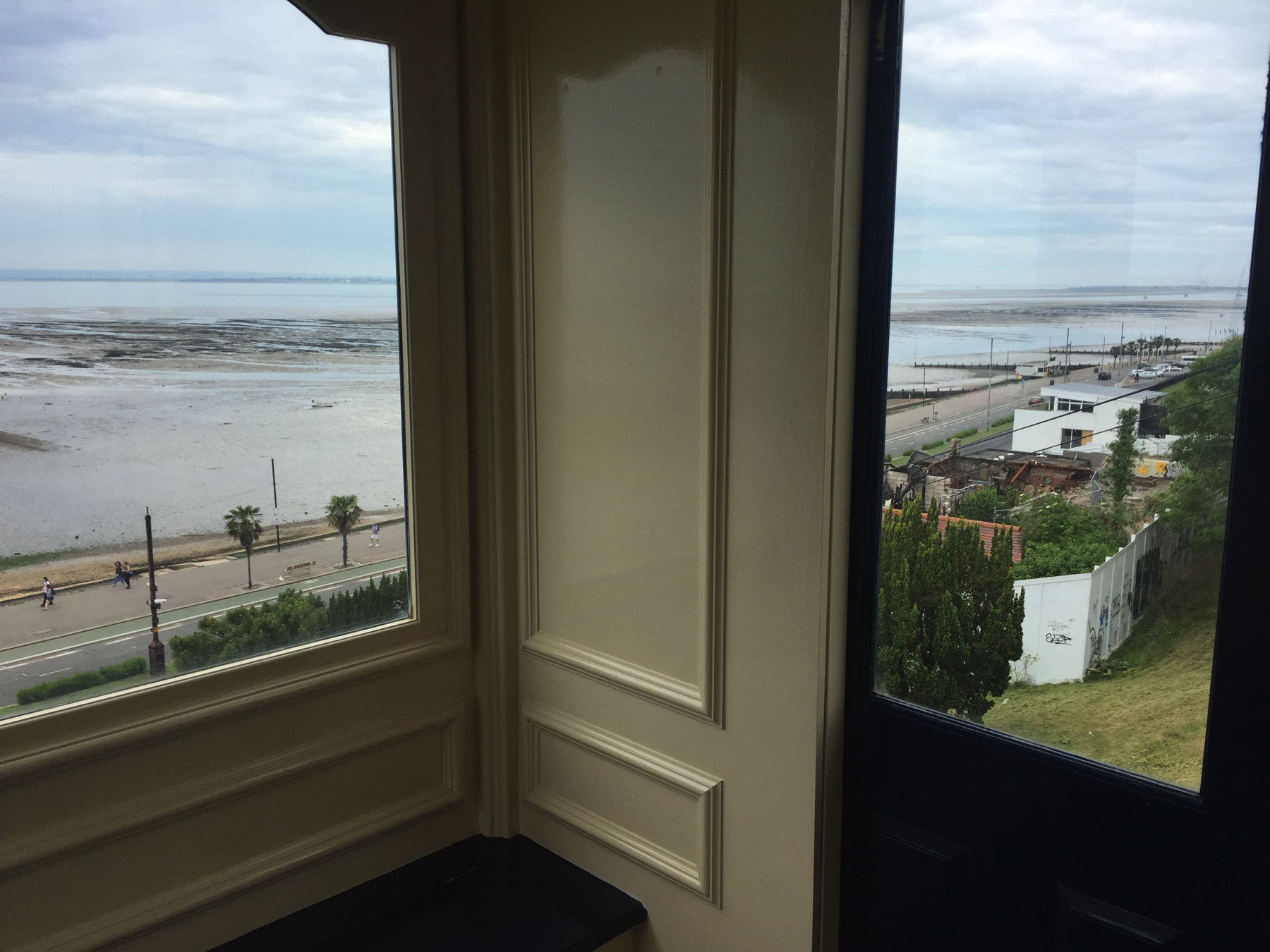
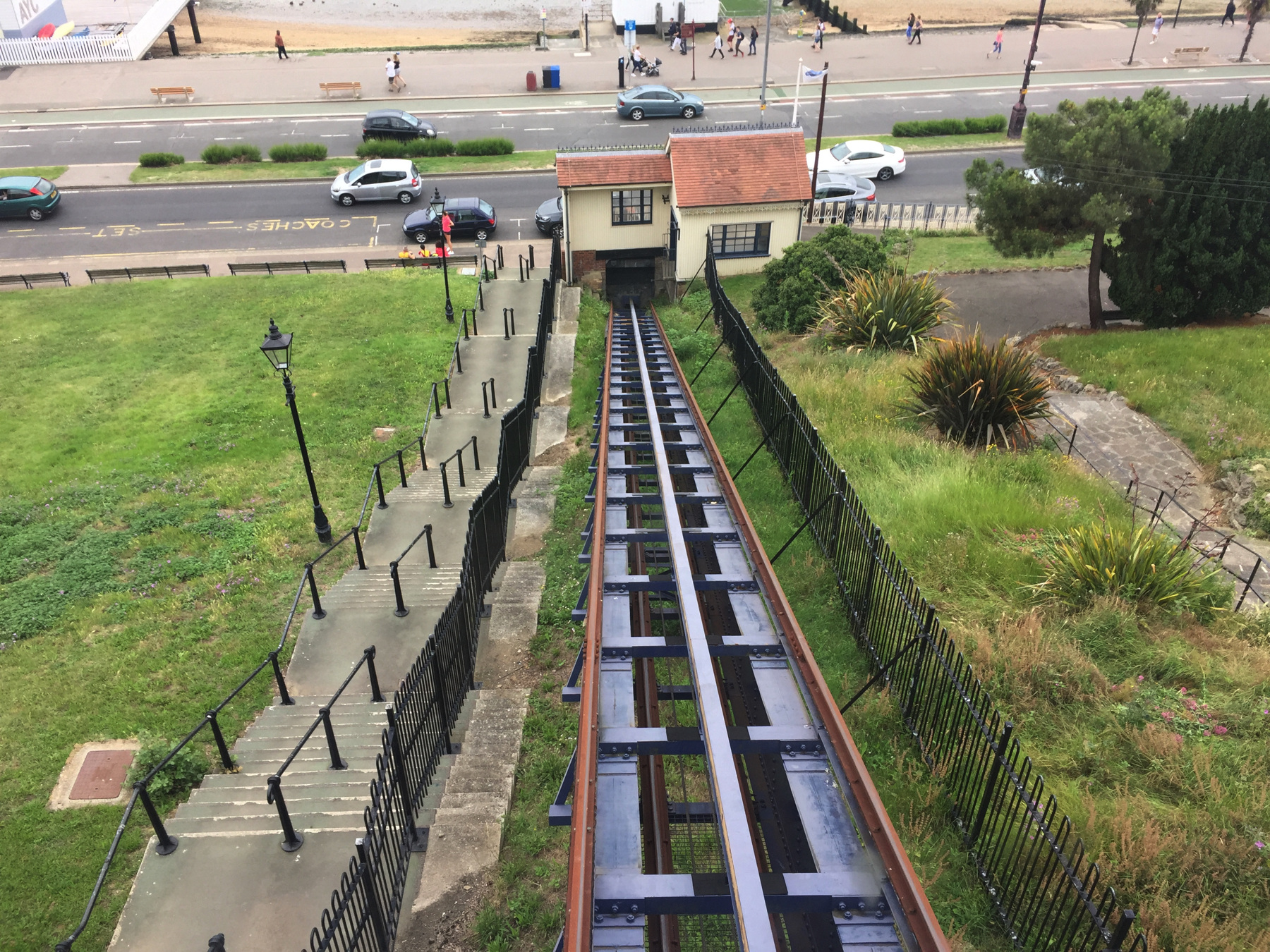
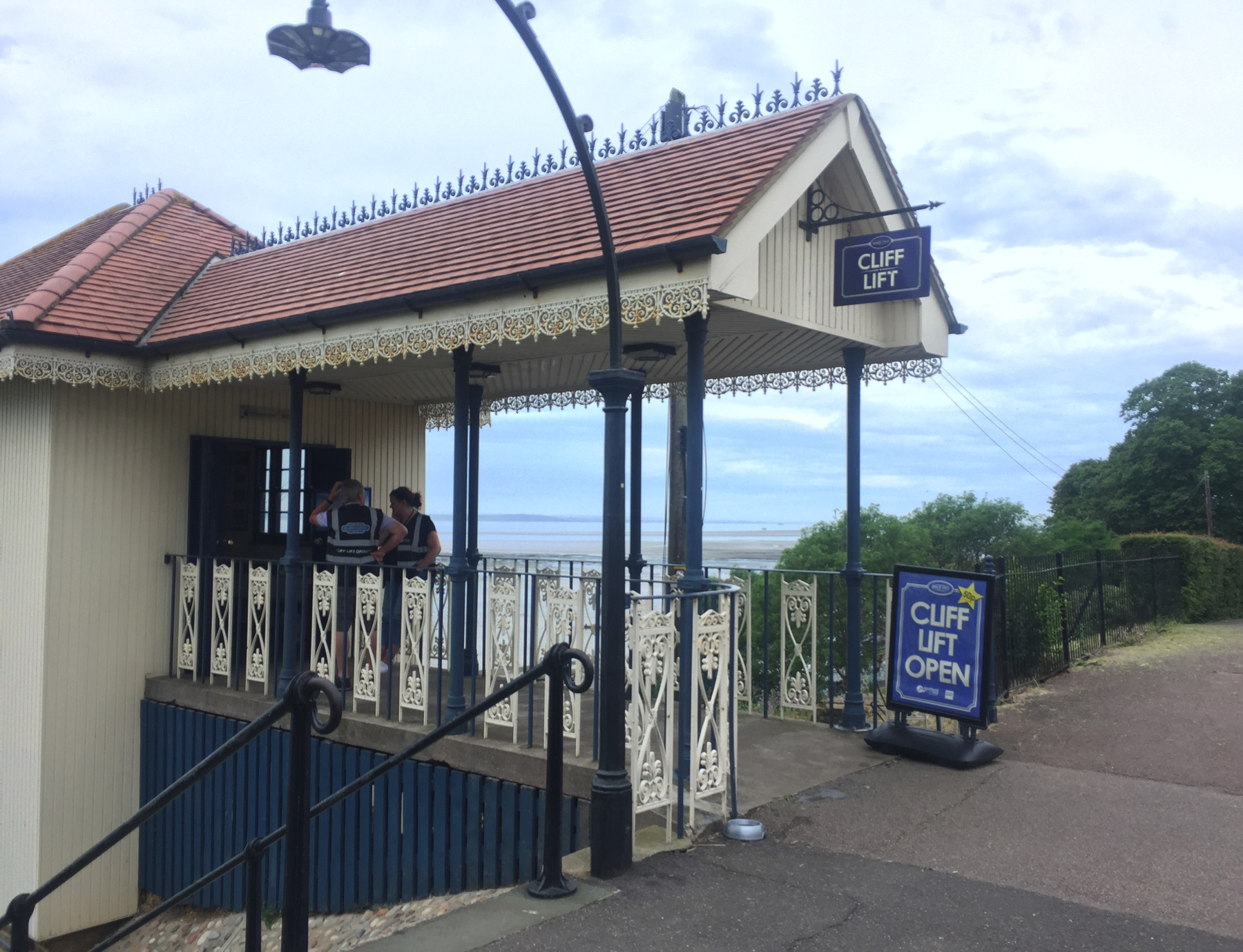
I just couldn't start an argument with these nice volunteers about whether their cliff lift is a funicular. I thanked them for the ride and departed.
My work was done. Back in London, I went into a pub under Fenchurch Street station called the Cheshire Cheese, which is not the famed Ye Olde Cheshire Cheese off Fleet Street. Both here and back in the USA I find names with misspelled "ye olde" to be so "quainte" that they make me clench my fists, and I would love to see this one call itself Þe Newe Cheshire Cheese just to poke fun at the "olde" one, which truly is much older. The customers within were a mixture of young City men in smart grey suits and simple people like me.
[note 1] The argument runs something like this.
Q: Why is the Southend Cliff Lift not a funicular?
A: A funicular has two cars at the ends of the same rope that
counterbalance each other. This has just one car. It's an
inclined elevator.
Q: But the car is counterbalanced by a weight car
running on another track directly under it, isn't it?
A: Yes but it is just a weight, like what an elevator has.
Q: What if the weight car ran on a track parallel to the track
with the passenger car, alongside it?
A: That doesn't matter; it is still not a funicular.
Q: What if the weight car ran on a track parallel to the track
with the passenger car, and it had a dummy mockup of a passenger car
built on top of it?
A: It would be a very elaborate inclined elevator, not a
funicular.
Q: What if there were two identical cars, on track of the same
gauge, side by side, but one car was always loaded with sandbags and
scrap metal and no one was allowed to ride in it?
A: (sigh) Then there is still only one car that can be used.
Besides why would anyone do that?
Q: At the Pier Hill Lifts, what if the two elevator cars were
connected at the top to the ends of the same rope, instead of being
connected to weights, so when one car went up the other went down, and
they passed in the middle?
A. It would not be a funicular railway. I have never
heard of a funicular elevator.
Q: Elevator cars have guide rails in the shaft. How far would
we have to tilt an elevator to make it a railway?
A: (sigh) Enough to make it rest on the rails, but an elevator
usually has one rail on each side, so if you tip it sideways it would be
the kind of monorail that rests on one rail but has another rail above
it to hold it in place, making it not really a monorail, but let's not
start in about that.
Q: Did you observe whether the other Pier Hill Lift car went up
when yours went down? If it did, if the rise is, say, 30 feet and the
run is zero because it is vertical, what per cent slope is that?
A: No to the first question, and I am glad.
TODAY'S FUNICULAR CLIFF RAILWAY
Cliff Lift, Southend-on-Sea
Date: since 1912
Power: Electric motor
Rise: 57 feet
Run: [about 117 feet]
Length: 130 feet
Slope: about 49%
Gauge: 4 feet 6 inches (weight car, 21 inches)
Track: 1 track
Car: level floor, doors at ends
CLAIMS: That it is a funicular. Sorry.
HEIGHT: Slopes of 1:2.28 (43.9%) and 43.4% are reported, but if I accept the height of 57 and length of 130, the run is about 116.8 feet and the slope is 48.8%. I observe that 57/130 is 43.8% but that is the wrong calculation.
TODAY'S ALE
The Cheshire Cheese, London: Purity Brewing, Mad Goose (cask ale)